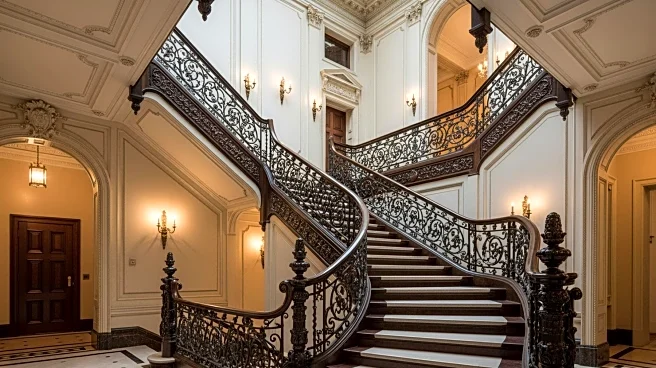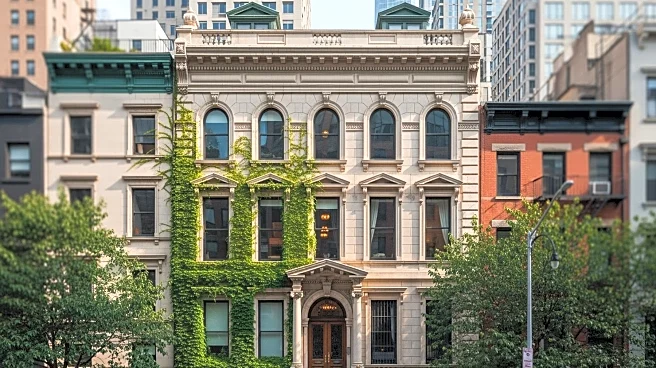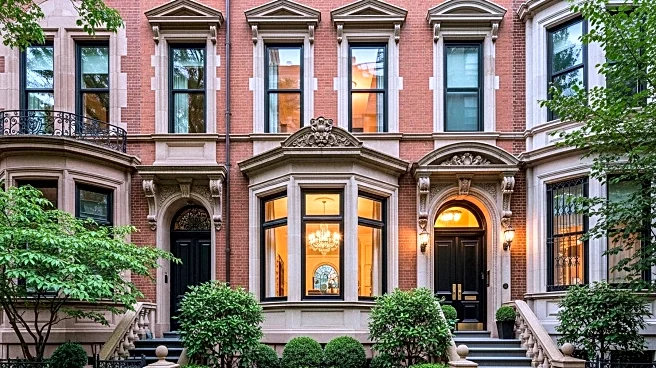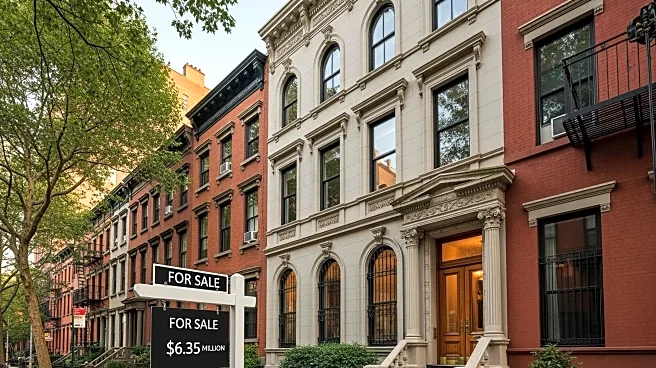What's Happening?
The River Forest mansion, once owned by the late Chicago Outfit boss Anthony 'Big Tuna' Accardo, has been listed for sale at $5 million. This Tudor-style mansion, built in 1930, was home to Accardo and
his wife from 1951 to 1963. Known for its grandeur, the mansion features an indoor pool, a two-lane bowling alley, Mexican onyx baths, and an English pub. The property, which spans 0.68 acres, also includes a gatehouse. Accardo, who was Al Capone's bodyguard, retired from active management of the Outfit in 1957. The mansion is currently listed in a private, agents-only network, with a property tax bill of $47,917 for the 2023 tax year.
Why It's Important?
The listing of Accardo's mansion highlights the enduring fascination with properties linked to historical figures of organized crime. The mansion's high asking price reflects its unique architectural features and historical significance. This sale could set a record for River Forest, where the highest recent sale was $2.85 million. The mansion's history as a gathering place for underworld figures during the 1950s and 1960s adds to its allure. The sale of such properties often attracts interest from collectors and history enthusiasts, impacting local real estate markets and preserving cultural heritage.
What's Next?
If the mansion sells near its asking price, it will set a new record for residential property sales in River Forest. The listing agent, Maria Cullerton, describes the mansion as having the stateliness of a gubernatorial mansion or museum, which may attract high-profile buyers. The sale could influence the pricing of other luxury properties in the area. Additionally, the mansion's historical significance may lead to interest from preservationists or those looking to capitalize on its storied past.
Beyond the Headlines
The sale of Accardo's mansion underscores the cultural impact of organized crime figures in American history. Properties like this serve as tangible reminders of the era when mobsters were quasi-celebrities. The mansion's opulence and craftsmanship reflect the wealth and influence these figures wielded. As such properties change hands, they offer opportunities for new narratives and interpretations of their historical context, potentially influencing cultural perceptions of organized crime.











